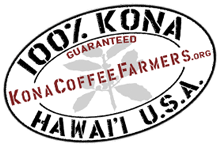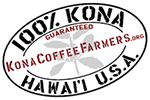IMPORTANT INFORMATION FOR FARMERS!
PBARC (Pacific Basin Agricultural Research Center) has released a study on CBB in coffee raisins that is timely for our harvests, and confirms suspicions that raisins on the ground are a significant contributor in season-to-season infestation percentages. The study highlights the importance of good harvest sanitation in reducing next year’s CBB load.
Click this link for the full study. https://academic.oup.com/jee/advance-article/doi/10.1093/jee/toz219/5542796?searchresult=1
Or read the abstract below
Abstract: Old coffee berries (raisins) are widely acknowledged as coffee berry borer reservoirs, yet few studies have attempted to quantify coffee berry borer populations in raisins remaining on farms postharvest. We collected ground and tree raisins at six coffee farms on Hawai’i Island to assess raisin density, infestation, coffee berry borer abundance, and adult mortality in three areas of each farm: trees, driplines (ground below the tree foliage), and center aisles (ground between tree rows). We also assessed infestation of the new season’s crop by conducting whole-tree counts of infested green berries.
Mean raisin density was significantly higher in the dripline compared to the center aisle and trees (131 vs 17 raisins per m2 and 12 raisins per tree, respectively). Raisin infestation was significantly higher in samples from trees (70%) relative to those from the dripline (22%) and center aisle (18%). Tree raisins had significantly higher coffee berry borer abundance compared to both areas of the ground (20 vs 3–5 coffee berry borer per raisin). Adult mortality was significantly higher on the ground (63–71%) compared to the trees (12%).
We also observed a significant positive correlation between ground raisin density and infestation of the new season’s crop. Across all farms, we estimated that 49.5% of the total coffee berry borer load was present in dripline raisins, 47.3% in tree raisins, and 3.2% in center aisle raisins. Our findings confirm the importance of whole-farm sanitation in coffee berry borer management by demonstrating the negative impact that poor postharvest control can have on the following season’s crop.neg

